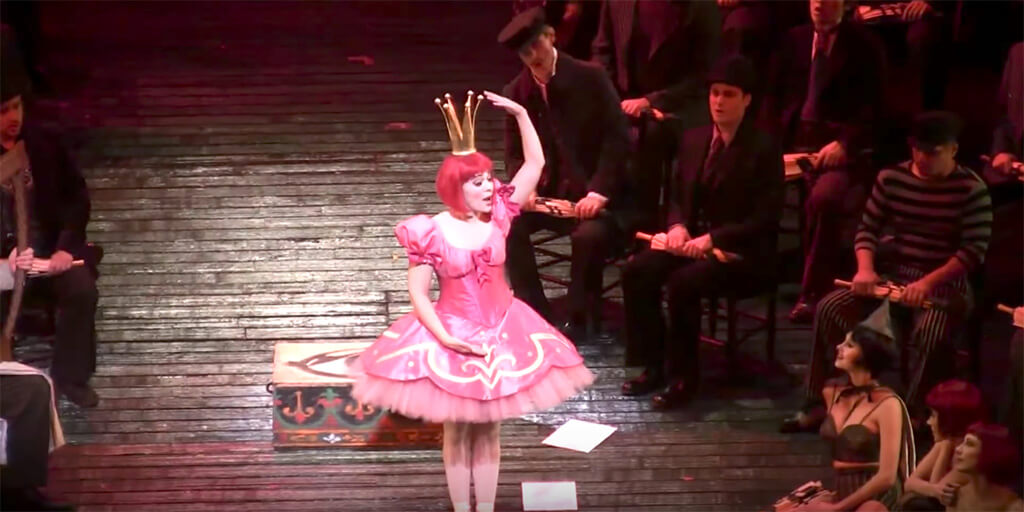
As a very tall man once said to my brother and I as we gaped at him as small children, “Let me answer your question before you even ask it…” (He was seven feet tall.)
Now as a soprano, let me answer your question before you even ask it… According to Scientific American Magazine, it is humanly possible for an opera singer to shatter glass with their voice, although they would need to find a glass with enough defects that it would break under pressure. I’ve personally never heard of it being done.
Science aside, here are five stratospheric ways to end your weekend on a high note!
Rachele Gilmore—Les oiseaux dans la charmille (Les contes d’Hoffmann—Offenbach)
In honour of the Metropolitan Opera’s impending season with Toronto’s Johannes Debus conducting Les contes d’Hoffmann, here we present soprano Rachele Gilmore’s last-minute Met debut where she stepped in for Kathleen Kim as Olympia. She ornaments her aria in its reprise to include a high A-flat (a semitone higher than the Queen of the Night sings in Die Zauberflöte). Fans have called it the highest note ever sung at the Met. Whether or not that’s true, we’re not ones to say.
Luciano Pavarotti—Ah, mes amies… Pour mon âme (La fille du Régiment—Donizetti)
Nicknamed the “King of the High C’s,” it would be hard to find a tenor in recent operatic history with more beautiful, ringing high notes than Luciano Pavarotti. This aria is particularly notorious as the tenor interpreting it has to sing nine high C’s. To hear how it’s done, check out this live recording of the King himself.
June Anderson—Dulcissime (Carmina Burana—Orff)
Sometimes it’s not about how high the note is, but how it’s positioned within the music that can really make time stand still. Those who have sat through Carl Orff’s colossal Carmina Burana know how transcendent a good “Dulcissime” can be. Here’s June Anderson with James Levine and the Chicago Symphony singing “In trutina” and the very high “Dulcissime” from Carmina Burana. (“Dulcissime” starts around 2:30 if you’re only in it for the high notes)
Leontyne Price—O patria mia (Aida—Verdi)
If you’re in the mood for a good cry, watch Leontyne Price’s farewell to opera in 1985. The beloved soprano sings her signature role with the pivotal aria, “O patria mia” in this stunning performance, complete with a pearly high C (even at the end of her career!). Quite the masterclass.
Thomas Allen—Act IV, sc. iv (Pelléas et Mélisande—Debussy)
Sometimes the most exciting and moving aspects of high notes come from the thrill of hearing artists stretch their vocal limitations. In Debussy’s Pelléas et Mélisande, Pelléas’s final encounter with Mélisande before his death features Pelléas overcome with passion and desire. His part rises to a high G#, at the top of a baritone’s range, right at the climax of the opera. Listen to Thomas Allen sing the role in this live Covent Garden performance.
For more LISZTS, click HERE.
- LISTEN UP |Cherry Blossom Season Requires A Cherry Blossom Classical Playlist - May 11, 2018
- HANGOUTS | Carla Huhtanen’s Guide To Toronto - May 8, 2018
- HANGOUTS | Spending The Day With Jane Archibald - April 12, 2018



